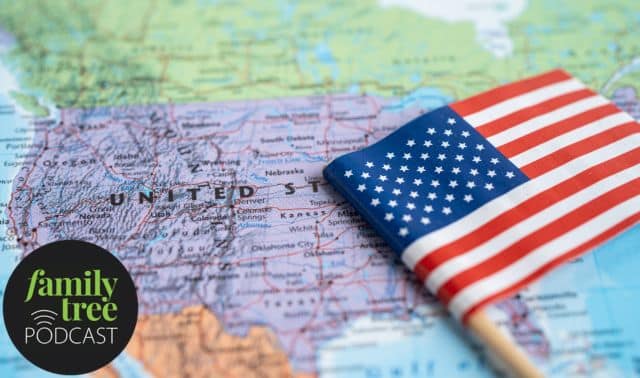
In the early 1930s, The Texas Rangerettes, an all-girl band, was so popular that Variety and Billboard featured them regularly. Four of the women were my cousins: Hazel, Gladys, Dorothy and Evelyn Jones. As children in Park Rapids, Minn., they had been taught by their mother, Mary McLaughlin Jones, to play nearly every musical instrument. During their high school years, billed as The Jones Girls, they entertained at local and area social functions.
After moving to Texas, the sisters joined forces with Willeen Gray and Jerry McRae to become The Texas Rangerettes. But at the height of the group’s popularity, the four sisters made a career decision that shocked their fans: They played their last dance on New Year’s Eve and, just into the new year of 1938, a San Antonio paper headline read: “From a throaty torch song to the chant of the litany; from swing tunes to psalms.” The story revealed that the sisters and their widowed mother had been accepted as postulants into the Incarnate Word and Blessed Sacrament Convent.
It was the first time in religious history that five women from the same family entered the religious life on the same day.
Fans predicted the career change wouldn’t last. Surely the musicians could not prefer the soft candlelight of the sanctuary to the dazzling foot-lights of the stage! The fans were wrong. The women all earned music degrees and went on to teach music. On the silver anniversary of their entry into the convent, Sister Dorothy said, “Due to the blessings of God, we are all happy and contented in our chosen life.”
The last of the Jones girls, Sister Genevieve, died in 1999. But their music is alive and well in the many students they taught over the years.
MADONNA DRIES CHRISTENSEN
Sarasota, Fla.
GERANIUM GENEALOGY
Each year during Memorial Day weekend, I visit the Farrar family plot in Woodlawn Cemetery. For the past few years, someone had been placing a flower box of geraniums on another Farrar lot and, a couple of weeks later, the box would disappear. I assumed that the groundskeepers were removing the plants, as they do with those not planted in the ground.
During my genealogy research, I discovered how all the Farrars in the cemetery were related. Again this year, the mysterious flower box arrived. Being a good distant cousin, I decided to plant the contents. A week or so later, Alden Farrar returned to retrieve the box and discovered the planted flowers. After talking to the grounds-keeper, he discovered our Farrars who are buried in the cemetery, and he was given the name of my uncle who then forwarded Alden’s name on to me. Since then, Alden and I have shared many wonderful family stories.
The whole experience has got to be the strangest way I’ve ever met a cousin!
LINDA CREENE
Framingham, Mass.
When History Repeats Itself
My interest in genealogy was first sparked by listening to my husband’s grandmother, Esterlene Smith Brooks Kesler, tell stories about growing up in the Blue Ridge mountains of south-west Virginia. Her favorite story reached back into the days of the Civil War to a young woman whose life seemed to parallel her own in remarkable ways.
In 1850 Peter Kesler, son of Henry Kesler of Franklin County, Va., married Susan Housman, a young woman who lived “over the ridge,” so to speak. Susan and Peter set up housekeeping in a farmhouse on the Kesler farm that dated to 1734, where they raised tobacco and children for 12 years until the Civil War intervened. Peter joined the Confederate army, leaving behind Susan, who was expecting their fourth child, and three children, 8 and under, to run the farm.
Peter died at Gettysburg and never met his new son, William Samuel Benjamin Peter Kesler, born in June 1862. Susan found herself falling on hard times with four young children and no male kin to work the 100-plus acres. Eventually, with mounting debts and the fate of the farm resting on her shoulders, she did what any reasonable woman of her times would do: She married the man next door.
William Brooks was a bachelor about the same age as Peter, and his roots in the county reached even further back. Following his marriage to Susan in 1867, Brooks managed to reconstruct the original Kesler farm, buying it piecemeal from Henry Kesler’s other children until he’d accumulated nearly 200 acres. Brooks also went on to raise three children of his own with Susan alongside Peter’s progeny, including a son named John William Lester Brooks born in 1875. But one of his last acts before his death was to take Peter’s youngest son, “Benny,” to the county seat to register the sale of his father’s original farmland to Benny in his own name. The Keslers were now officially land owners again, and neighbors with the Brooks.
Benny built a fine new home on his farm and took a wife of his own in 1908. Together, they had one child, a son named Vernon. Meanwhile, on the adjoining Brooks farm, J.W.L. Brooks and his wife raised three sons, including one Claude Brooks, who grew up and married my husband’s grandmother, Esterlene “Teen” Smith, in 1944. Both Brooks and Kesler raised tobacco and children just as their forebears had, until a strange twist of fate played out history all over again.
While working in the tobacco fields in the sweltering summer of 1965, Claude suddenly dropped dead of a heart attack, leaving behind his wife and their teenage son Clarence. They struggled along for some time. But Teen realized that Clarence couldn’t handle the farm on his own, and that another pair of hands would free him up to pursue other occupations. So she did what any reasonable woman of her time would do: She married the man next door, who just happened to be Vernon Kesler.
So in 1971, Teen married the grandson of Peter and Susan Kesler, just as she had married the grandson of William and Susan (Kesler) Brooks in 1944. Thus, almost exactly 100 years after Susan married a Brooks to save the Kesler farm, Teen married a Kesler to save the Brooks farm. The more things change, the more they really do seem to stay the same.
SHANNON BROOKS
Glade Hill, Ma.
A FAMILY FOREST
Australian genealogist and author Janet Reakes sends along an excerpt from an account of the population of the District of Schuitka in Russia, sent to the chancery officials in Moscow one year. The Russian census-takers noted with amazement: “There is in this district a peasant of the name of Feodor Basilly, who has had a very extraordinary number of children by two wives. His first wife brought him 69 children in 27 lyings-in. She had been delivered four times of four children, seven times of three, and 16 times of two. His second wife has lain in only eight times and has had two at a birth six times and three children twice. These two women therefore in 35 lyings-in have made him father of 87 children; and what is still more extraordinary there are but four of these that have died so that his family consists at present of 83 children.”




